Begin: Saturday June 8 at 1 PM CDT
End: Sunday June 9 at 10 PM CDT
My call for this contest is N5ZY/R
Link to the ARRL June VHF Contest: https://www.arrl.org/june-vhf
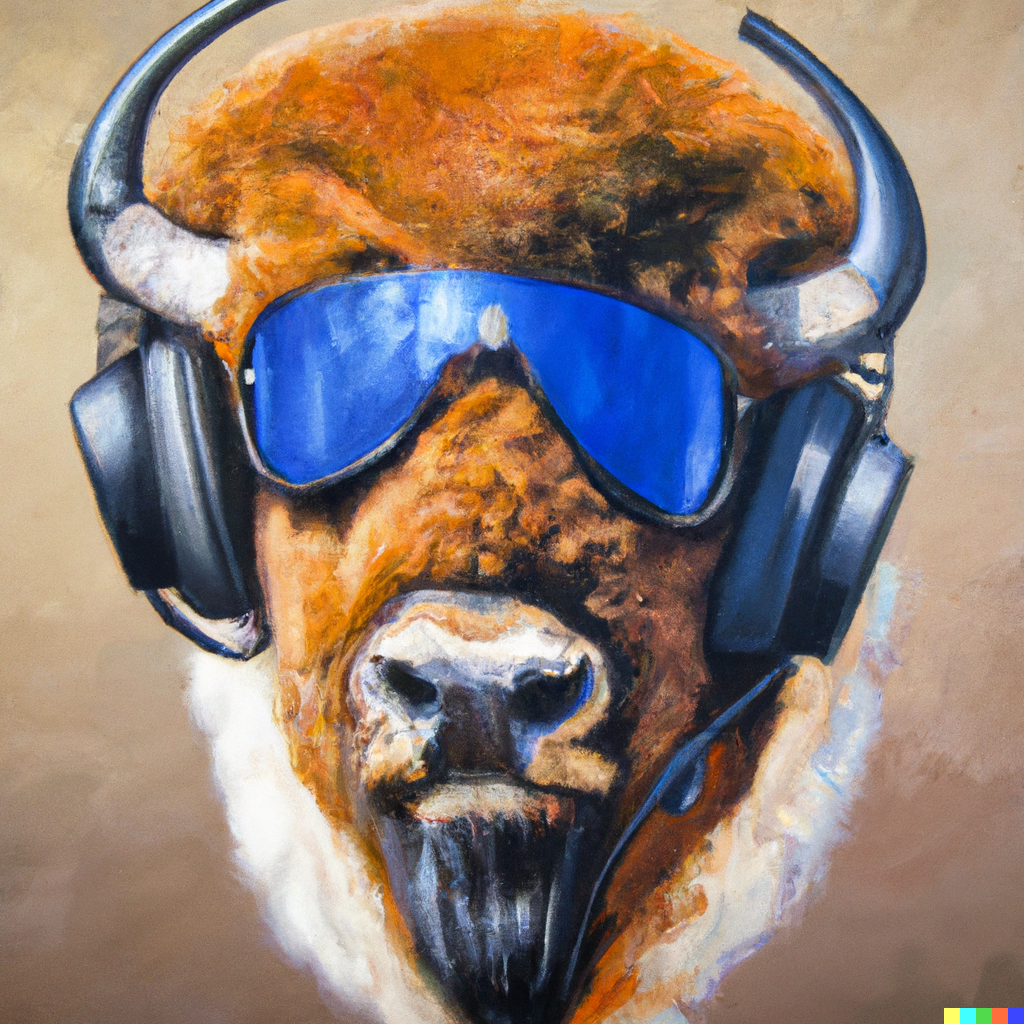
Post Contest
Again I must start by saying Thank You to Randy, N0LD for mentoring me in rovering and for also telling people when I was on the air. It was again interesting to make contact with Randy using only the Comet Vertical on 2m and 70cm while he was at home. I also must say Thank You to the contest organizers for their vast number of hours spent reviewing rules and comments, reviewing logs and scrutinizing the award recipients.
| Grid | QSO Count | Note – 590 miles |
| EM04 | 74 | Most of this is on Mt. Scott, although some in Hobart |
| EM05 | 63 | Weatherford, Elk City, Granite, Anadarko |
| EM14 | 3 | South Chickasha (contest ended here at 10PM Sunday) |
| EM15 | 22 | North Chickasha, Oklahoma City (OKC was dinner time unfortunately so nobody was on the radio) |
| EM16 | 22 | Perry (thanks for the free charger City of Perry!), Blackwell |
| EM17 | 4 | South Haven, Kansas (Sunday at 1AM local time) |
Grids I worked in this contest

This June I was a lone rover, not part of a ‘wolf pack’. I was ill-prepared for this journey after having Bronchitis all of May but I didn’t want to miss out on the June VHF contest at the start of the VHF season. I enjoy driving an hour then making some radio contacts then driving again. I also really enjoy seeing the different elevations and foliage and rocks and the variety of colors. This June I drove approximately 590 miles using mostly recycled stops from previous plans. I added a couple new stops however one was a bust. I had hoped to operate at a high elevation in Granite OK but the road to ascend the mountain was gated. Also, the New Moon was a problem – it was really, really dark! Saturday night in Kansas on a 10 mile detour on a gravel road due to a closed overpass was a bit unnerving when I could occasionally see the deer looking at me.
Once again I operated with WSJTX in Ubuntu and N1MM in a Windows VM and it worked really well except when using more than 50 watts on 6m. The RF persistently caused USB issues and I would have to reboot the laptop to regain radio control if I used more than 50 watts on 6m.
I never utilized 222 MHz nor 1294 MHz so I unintentionally operated in the Limited Rover category. I also never made it over to Tulsa as my arrival time Saturday would have been after dark. Tulsa’s Turkey Mountain park closes after sunset and Tulsa has a LOT of low-hanging tree limbs require sunlight to navigate around them with the antennas! Unfortunately my journey Saturday evening into Kansas produced lackluster results with little to no VHF openings. I didn’t experience any 6m or 2m propagation/enhancement or possibly everyone went to bed? From https://vhf.dxview.org/ however I could see it was all a few hundred miles South of my stops and 100 miles East of my stops.
Throughout the contest I would hear brief moments of wobbly signals on 6m which resembled meteor scatter. If it was there long enough WSJT would decode a station and then I would never see it again but most didn’t last more than a few seconds before fading away.
Sunday I stopped at Mount Scott which was great. While it was hot in the valley between mountains it was cool on top of Mount Scott. I remained atop the mountain with the windows open logging 6m contacts with a lot of strong signals. From here I experienced openings into Canada and Mexico.
I happily return home without any tree limb strikes, despite one stop in the dark of night where I forgot to lower the 6m loop and I drove a few miles at 60 MPH with it sticking 12 feet above the car.
Now I’m beginning my planning for the Sept VHF contest!
Here is the car with the antennas identified. Not visible is the cargo strap from the passenger front seat roof mounted handlebar, through the door jam, up and over and around the PVC then back down to the rear seat driver side roof mounted handlebar. For this trip I only used one strap while in all prior trips I used two straps in an X pattern. I didn’t attach the second strap because I was suffering from the heat (100 deg F while assembling) and because the super strut steel base gives me a lot more confidence.
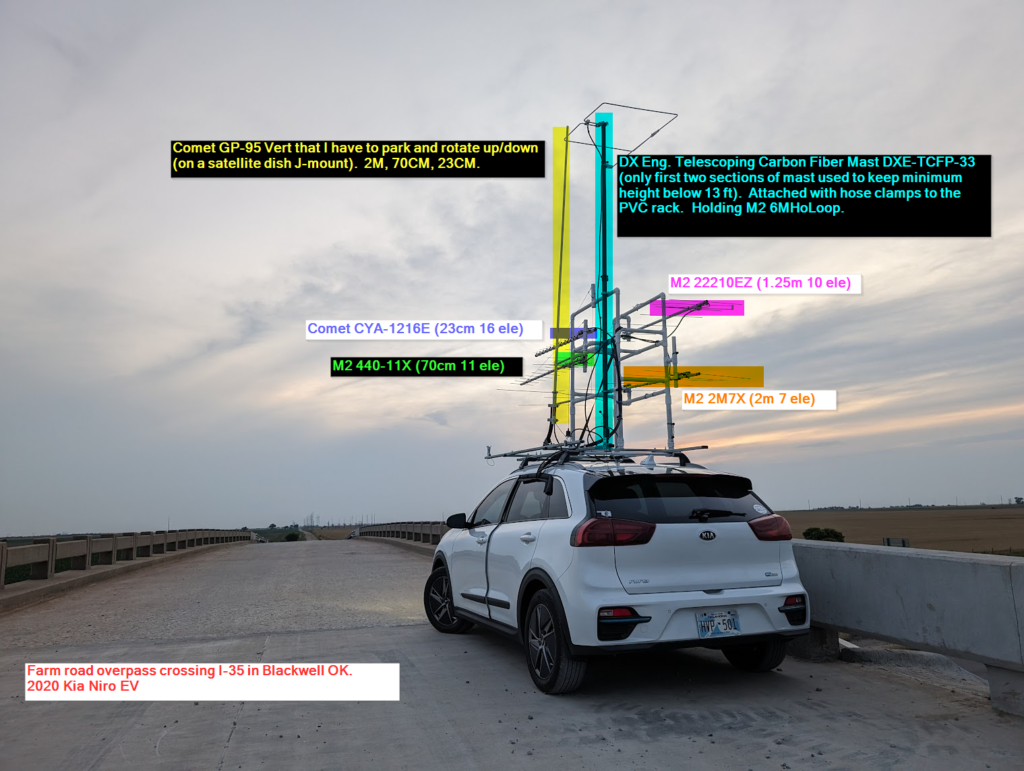
I replace the pool noodle with the much softer, more malleable rubber pipe wrap insulation. This worked amazingly well to keep out water and especially noise!

I’m also using a Dewalt toolbox in the passenger seat to hold the radios now, and it has drawers that pull out. This fall I have to somehow add my old IC9100 along with a 222 transverter. This is where a little IC7300 would be great to run the transverter.
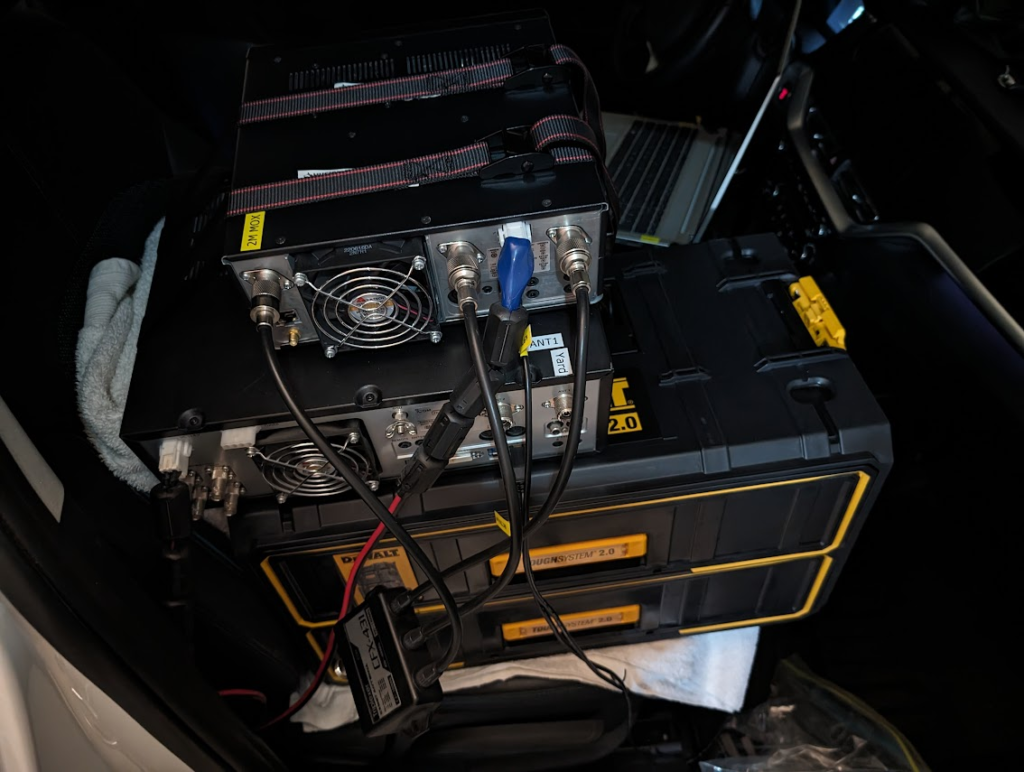
Here is a better view of the front seat. The radios have two cargo straps holding them together and one long strap around the seat holding them and the toolbox in the seat for a hard brake.
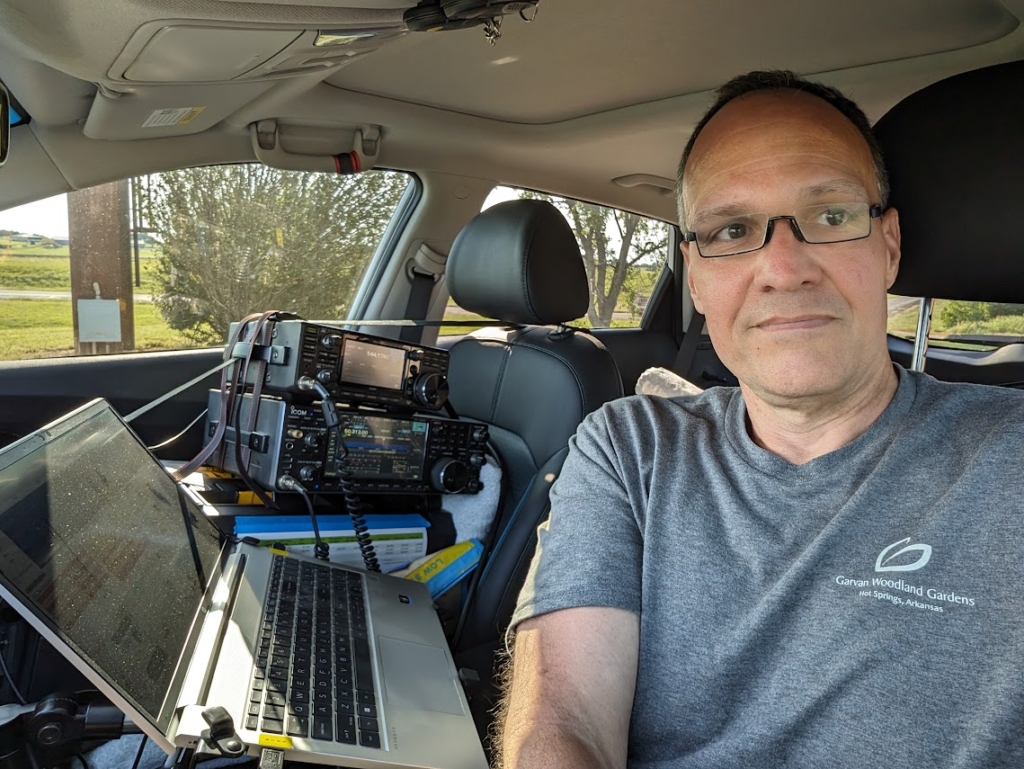
This is the mountain in Granite I had hoped to ascend and operate from. You can see the radio broadcast tower up there. The summit is at 2,300 ft elevation.
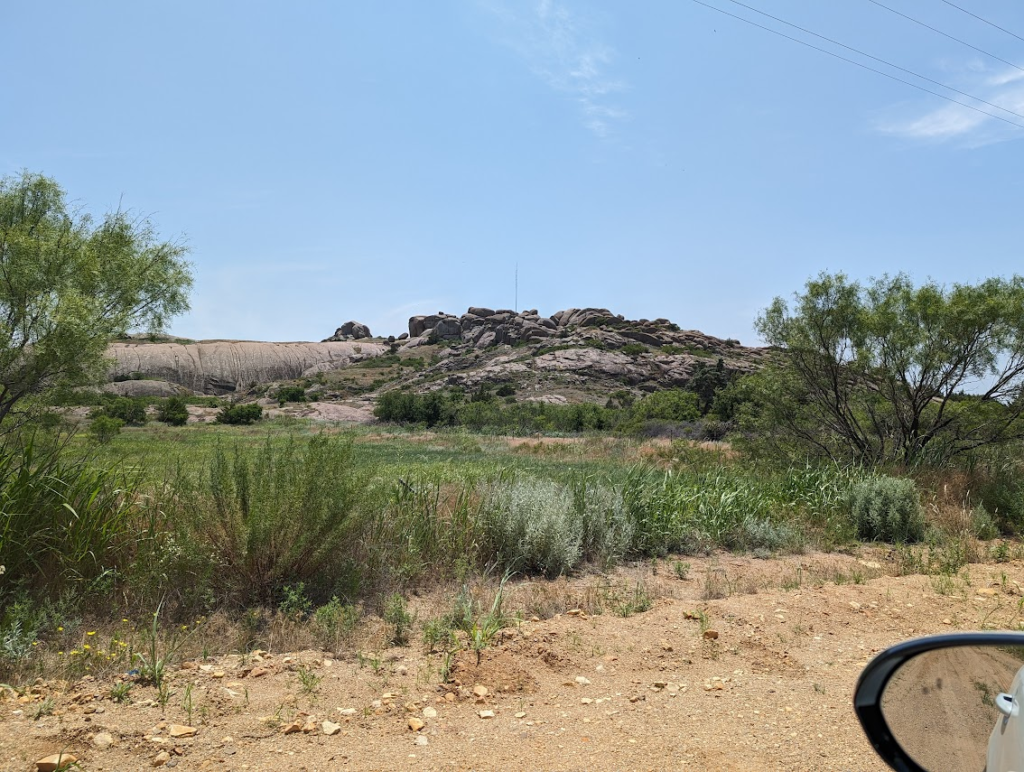
but sadly…
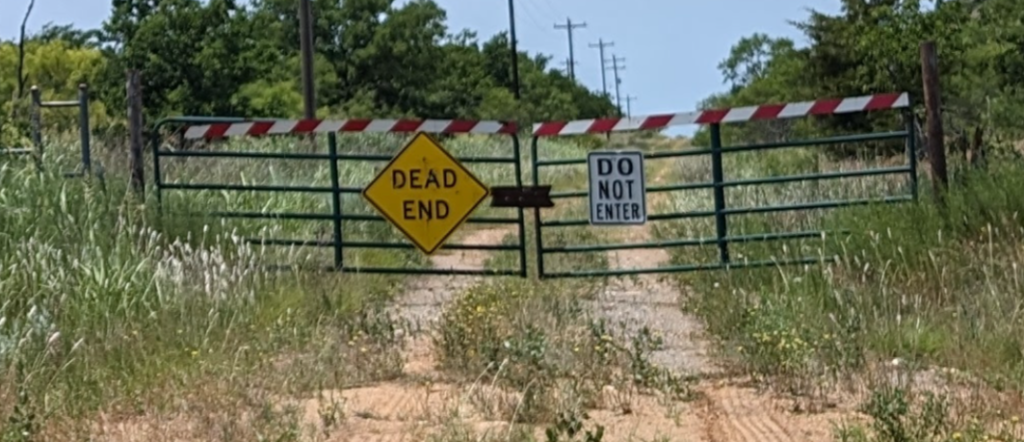
This was the only mountain in the area I could see with a road to the summit and at 2,300 ft it’s higher than the others. Back to reviewing topo maps…

Mount Scott again – my favorite place I’ve operated so far at 2,460 ft. I was rained on a little up here but I decided it was time to leave when I could see the lightning approaching.
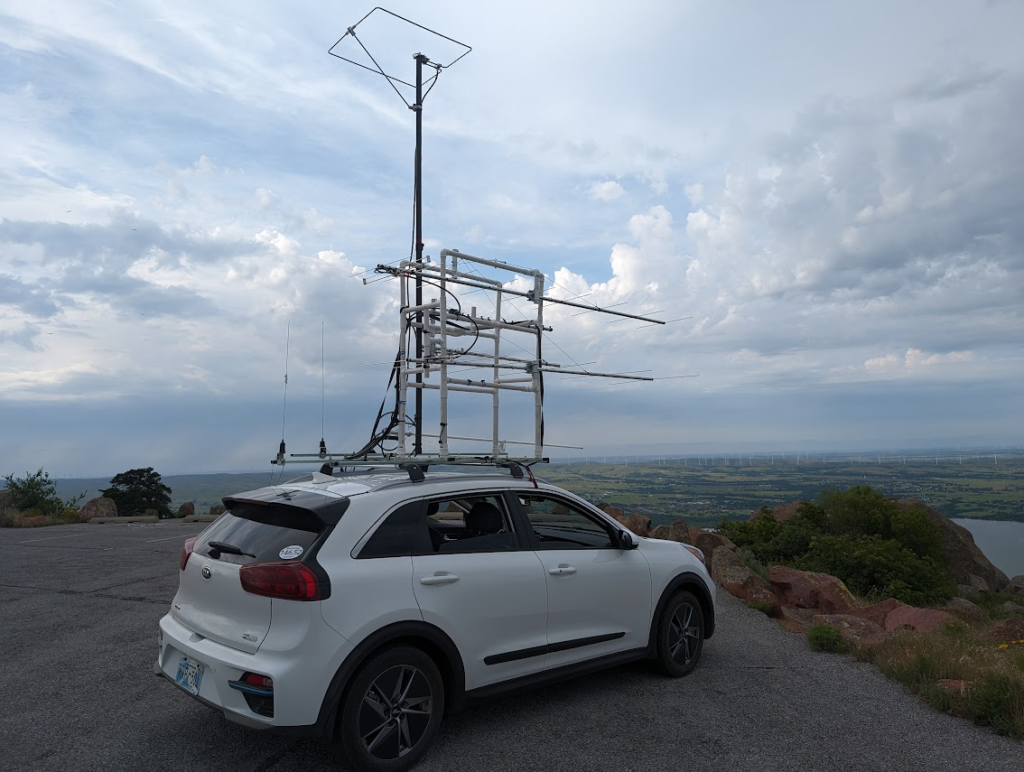
Here you can see that I build the new roof rack using 14-Gauge silver half slotted strut used for electrical conduit. I love this stuff since it’s tough, has lots of holes I can use, and given it’s strength it’s not very heavy. It also does not warp when it’s wet. 🙂

Here is the Saturday route

And the Sunday route

VHF Activity Weekend – Get on the air!
June 8 and 9 is the “ARRL VHF Activity Weekend”, more formally known as the “ARRL June VHF Contest”. Everyone is encouraged to use this weekend to test your VHF base station or mobile station’s range without the assistance of a repeater. Use this opportunity to spur your efforts to experience, understand and improve your VHF skills! You do not have to log contacts or turn-in a contest log if your only curious or experimenting with your range. If you find yourself having fun however a log of contact time, callsign, freq., mode (FM or sideband or FT8) and Grid Square is all you need to turn-in to ARRL and see if you can achieve an award as “Single Operator, FM-Only Oklahoma” Whatever you do, I hope you have fun and learn a lot and I hope I get you in my logbook!
APRS Position Beacon
I will use APRSdroid to beacon my live position.
You should be able to see where I am using this link: My real-time location beacon in APRS
Exchange of information
In this event we exchange call signs and our 4-character grid square. If you are unaware of your Grid Square it’s simple to find – just look up your callsign on QRZ.COM and click Detail and look for Grid Square. It will be listed with 6 characters but for this event we only need the first 4 (e.g. EM15 not EM15pa).
Frequencies
For this contest we are allowed to use everything from 6m and up, and the National Simplex Frequency may be used if not busy.
| Band | WSJT-FT8 (USB) | Call Freq (CW/USB) | QSO Freq (USB) | FM SIMPX NA | FM SIMPX 1 | FM SIMPX 2 | FM SIMPX 3 |
| 6 M | 50.313 | 50.125 | 50.145 | ||||
| 2 M | 144.174 | 144.2 | 144.220 | 146.520 | 146.490 | 146.550 | 146.580 |
| 1.25 M | 222.174 | 222.1 | 223.5 | ||||
| 70 cm | 432.174 | 432.1 | 446.0 | ||||
| 23 cm | 1296.174 | 1296.1 | 1294.5 |
Antennas
| Band | Ant. |
| 6 M | M2 6MHOLOOP (horizontal) |
| 2 M | M2 Antennas 2M7X (horizontal yagi) |
| 2/70/23 Vert | Comet Base Vertical CMA-GP-95 (2m/70cm/23cm) (While parked only!) |
| 1.25 M | M2 Antennas 222-10EZ (horizontal yagi) |
| 70 CM | M2 Antennas 440-11X (horizontal yagi) |
| 23 CM | Comet CYA-1216E (horizontal yagi) |
Planned Route
If there are heavy storms I may not go. I don’t want to be a weather statistic. If my bronchitis is getting worse I may not go. I’ve been too sick lately to create a detailed strategy but I think I will begin Saturday by driving to Lawton and starting in grid EM04 then migrating North through EM05 and EM06 then back home via EM16 and EM15.
Sunday I may do the opposite and start from EM15, enter EM16, EM26, then turn South to EM25 and possibly EM24 before returning home via EM14 and EM15. This is ambitious given my 130 mile range limited vehicle (it would not be a problem if I had a 2024 Kia EV6 (350 mile range) vehicle).

Here you can see the new roof rack created using electrical conduit U-Channel steel. I believe this is slightly lighter weight, has less wind resistance and it a lot more versatile.
This can be used to also hold a carbon fiber mast off the side of the car or mounted on the roof, but that may be a 2025 achievement.